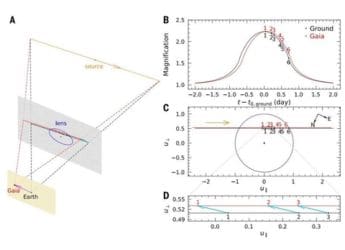- Home
- Science
- Science News
- NASA Picks Moon Site Nobile Crater for Landing Ice Hunting Rover in 2023
NASA Picks Moon Site Nobile Crater for Landing Ice-Hunting Rover in 2023
NASA hopes the robot will confirm the presence of water ice just below the surface.

Photo Credit: Twitter/ @NASA
The robot is called Volatiles Investigating Polar Exploration Rover, or VIPER
NASA on Monday announced it would land an ice-seeking rover on a region of the Moon's south pole called the Nobile Crater in 2023.
The space agency hopes the robot will confirm the presence of water ice just below the surface, which could one day be converted into rocket fuel for missions to Mars and deeper into the cosmos.
"Nobile Crater is an impact crater near the south pole that was born through a collision with another smaller celestial body," Lori Glaze, director of NASA's planetary science division told reporters.
It is one of the solar system's coldest regions, and has only so far been probed from afar using sensors such as those aboard NASA's Lunar Reconnaissance Orbiter and the Lunar Crater Observation and Sensing Satellite.
"The rover is going to get up close and personal with the lunar soil, even drilling several feet down," said Glazer.
The robot is called Volatiles Investigating Polar Exploration Rover, or VIPER.
Its dimensions are similar to a golf cart - five feet by five feet by eight feet (1.5 metres by 1.5 metres by 2.5 metres) and looks somewhat similar to droids seen in Star Wars. It weighs 950 pounds (430 kilograms).
Unlike rovers used on Mars, VIPER can be piloted in near real time, because the distance from Earth is much shorter - only around 200,000 miles (300,000 kilometres) or 1.3 light seconds.
The rover is also faster, topping out at 0.5 mph (0.8 kph).
Solar-powered VIPER comes with a 50-hour battery, is built to withstand extreme temperatures, and can "crab walk" sideways so that its panels keep pointing toward the Sun to maintain charging.
In terms of the mission's scientific goals, the VIPER team wants to know how frozen water reached the Moon in the first place, how it remained preserved for billions of years, how it escapes and where the water goes now.
The mission is part of Artemis, America's plan to return humans to the Moon.
The first crewed mission is technically set for 2024, but will likely take place significantly later as various aspects are running behind schedule.
Catch the latest from the Consumer Electronics Show on Gadgets 360, at our CES 2026 hub.
Related Stories
- Samsung Galaxy Unpacked 2025
- ChatGPT
- Redmi Note 14 Pro+
- iPhone 16
- Apple Vision Pro
- Oneplus 12
- OnePlus Nord CE 3 Lite 5G
- iPhone 13
- Xiaomi 14 Pro
- Oppo Find N3
- Tecno Spark Go (2023)
- Realme V30
- Best Phones Under 25000
- Samsung Galaxy S24 Series
- Cryptocurrency
- iQoo 12
- Samsung Galaxy S24 Ultra
- Giottus
- Samsung Galaxy Z Flip 5
- Apple 'Scary Fast'
- Housefull 5
- GoPro Hero 12 Black Review
- Invincible Season 2
- JioGlass
- HD Ready TV
- Laptop Under 50000
- Smartwatch Under 10000
- Latest Mobile Phones
- Compare Phones
- Vivo Y50e 5G
- Vivo Y50s 5G
- Realme 16 Pro+ 5G
- Realme 16 Pro 5G
- TCL Nxtpaper 70 Pro
- OPPO A6 Pro 5G
- Honor Power 2
- OPPO A6s
- Zephyrus Duo 16 (2026)
- Asus ROG Zephyrus G16 (2026)
- Realme Pad 3
- OPPO Pad Air 5
- Xiaomi Watch 5
- Huawei Watch 10th Anniversary Edition
- Acerpure Nitro Z Series 100-inch QLED TV
- Samsung 43 Inch LED Ultra HD (4K) Smart TV (UA43UE81AFULXL)
- Asus ROG Ally
- Nintendo Switch Lite
- Haier 1.6 Ton 5 Star Inverter Split AC (HSU19G-MZAID5BN-INV)
- Haier 1.6 Ton 5 Star Inverter Split AC (HSU19G-MZAIM5BN-INV)

















